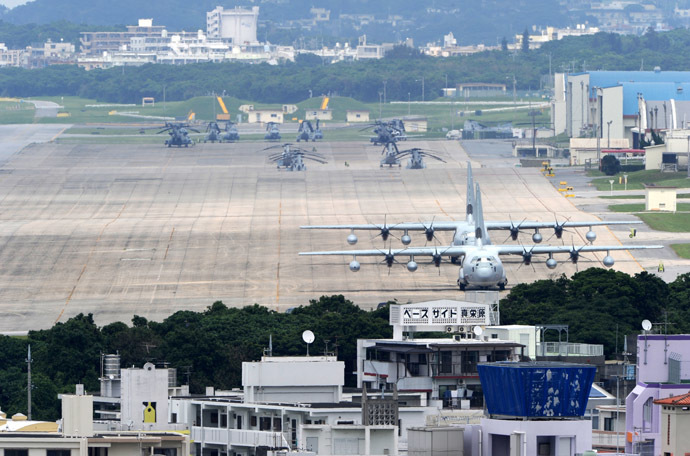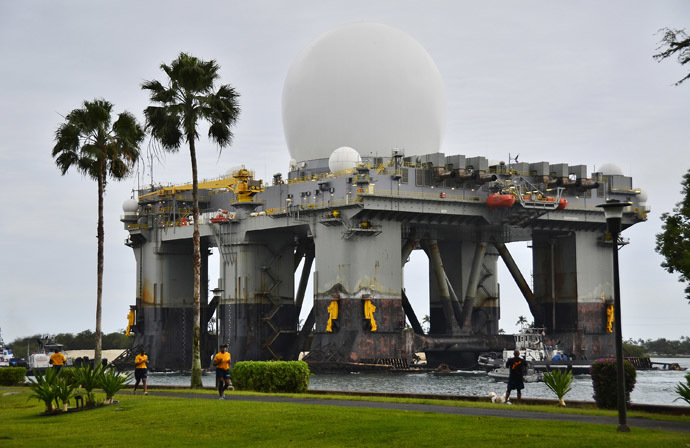Japan to pay $3.1bn to remove US troops from Okinawa, will host spy drones

Tokyo is to foot a $3.1 billion bill, which is part of the cost for relocating American troops from Okinawa. For the first time, it will also host US long-range surveillance drones, which would help to monitor disputed islands in the East China Sea.
The cost-sharing agreement for the troop transfer and the future deployment of drones by next spring are both part of an effort aimed at updating the US-Japan military and diplomatic alliance.
The pledge to modernize the alliance for the first time in 16 years was made in a joint declaration during the visit of US Secretary of State John Kerry and US Defense Secretary Chuck Hagel, who met their Japanese counterparts, Foreign Minister Fumio Kishida and Defense Minister Itsunori Onodera.

Japan hosts some 50,000 American soldiers and officers, particularly in Okinawa. Their presence is a constant source of tension with local populations due to crimes committed by the servicemen, disruptions caused by military flights and land use by the US military.
Last year the countries announced a plan to relocate about 9,000 US Marines from Okinawa to other locations. 5,000 of them will go to Guam while others will be stationed elsewhere. The estimated cost of the relocation is about $8.6 billion.

Japan will cover $3.1 billion of that sum, the officials from the two countries announced on Thursday. The cost includes development of new facilities in Guam and the Northern Mariana Islands.
As the foot soldiers leave, US Global Hawk unmanned aircraft will be arriving, marking the first time that American drones will be stationed on Japanese soil on a permanent basis. Two or three long-range spy drones will be placed at a US base to help monitor Japan’s territory.
While the disputed Senkaku Islands in the East China Sea was not mentioned in the documents, the islands contested by Japan, China and Taiwan was a prevailing topic in public speeches after the signing.
Hagel said the US reiterated that it recognizes Japan’s administration of the islands and has responsibilities to protect Japanese territory under a mutual defense treaty.
“We strongly oppose any unilateral or coercive action that seeks to undermine Japan’s administrative control,” he said.
The US will also deploy second X-band early warning radar in Japan. Officials were careful to stress that it will be directed against North Korea rather than China, and will help track down and probably intercept missiles coming from the defiant state. The plan to deploy radar was first announced by the then-Defense Secretary Leon Panetta about a year ago. The new system will be placed at Kyogamisaki air base in Kyoto prefecture in western Japan to complement already existing radar in the northern part of Japan.

Beijing however may not be convinced by the assurances. It has criticized the installation of the inaugural military radar, saying it could disrupt the strategic military balance in the region and destabilize the situation.
Other plans to boost US military presence in Japan include possible deployment of F-35 jet fighters around 2017, a top UN official told AP. There is also a plan to send Navy P-8 anti-submarine aircraft later this year – the first time the sub-killers deployment outside of US.
The upgrade also expands cooperation in areas like counter-terrorism and cyber warfare. The Internet threat is the one that Japan sometimes cannot defend itself against with the systems it currently has, Kazunori Kimura, the Defense Ministry’s director of cyber-defense planning, told Reuters.

